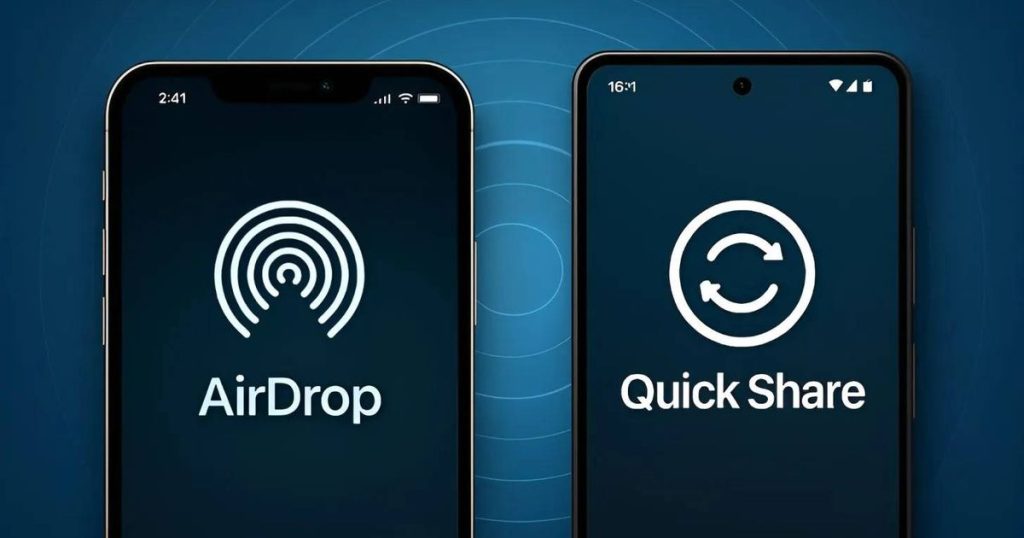Sharing files between Android and iPhone has always been harder than it should be. Now, Google is changing that. The Pixel 10 is the first Android phone that can send and receive files directly with Apple’s AirDrop. Photos, videos, and documents can finally move between the two platforms without cables, apps, or workarounds. It feels like the start of a more open mobile world.
A new bridge between Android and iPhone
Google has added AirDrop support to Quick Share. If an iPhone user sets AirDrop to “Everyone for 10 minutes,” the device appears in the Quick Share panel on Android. Tap it, send your file, and the iPhone user accepts the transfer. The same works in reverse: Android phones show up on Apple devices.
The best part is how natural it feels. You share a file the same way you always did — only now the other person doesn’t need to own the same phone as you.
Why this change matters
For years, sending media between Android and iPhone felt outdated. Most people relied on messaging apps that reduced quality. Others used third-party tools that were slow or unreliable. AirDrop was always smooth, but only inside Apple’s ecosystem.
This update shows how important simple communication has become. People don’t care about platform rivalries. They just want file transfers that “just work.” Google’s move fits a larger trend too, as companies slowly break down old ecosystem barriers. Think of RCS coming to iPhone or WhatsApp syncing better across devices. This is another step in that direction.
Strong focus on security
Google spent a lot of time explaining the security behind this feature — more than usual for a sharing update.
Rust at the core
The direct connection between Android and Apple devices is built using Rust, a memory-safe language that helps prevent common bugs and attacks. Rust is already used deep in Android’s system, and this feature builds on that foundation.
Android and iOS protections
Both systems add their own layers of defense. Android has OS-level protections and Play Protect. iOS brings its own sandboxing and file-handling safeguards. When combined, the two platforms create a secure tunnel for file transfers.
Independent testing
To make things even more robust, Google hired NetSPI for a full security audit. The results showed that the implementation is secure and even stronger than other cross-platform sharing tools.
How to enable it on Pixel 10
Pixel 10 owners only need to update a system module:
Settings → your name → Google services → All services → Privacy & security → System services → Quick Share Extension.
Update it and restart the phone. After the reboot, AirDrop support becomes available.
Looking ahead
Google says it didn’t partner with Apple for this feature but is open to working together — especially to unlock AirDrop’s “Contacts Only” mode. If Apple ever agrees, cross-platform sharing will feel even more natural.
For now, Pixel 10 users get this first, and more Android devices will follow. Once people try it, it will be hard to imagine going back.
Conclusion
This new link between Quick Share and AirDrop might look small, but it fixes a long-standing everyday frustration. Sharing files across platforms finally feels simple, fast, and modern — the way it always should have been.
Key Takeaways
- Quick Share now works directly with AirDrop on iPhone, iPad, and Mac.
- The feature starts on Pixel 10 and will expand to other Android phones.
- Transfers are secure, private, and peer-to-peer.
- Google built the system using Rust and ran independent security tests.
- Apple didn’t partner on the feature, but Google is open to future cooperation.


